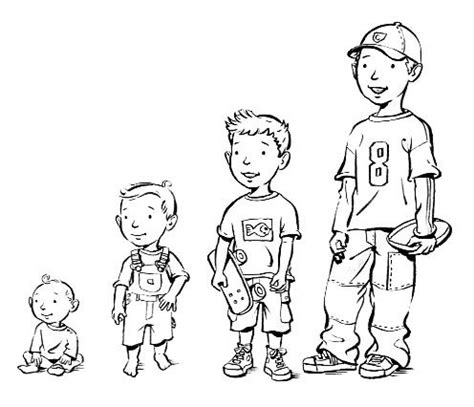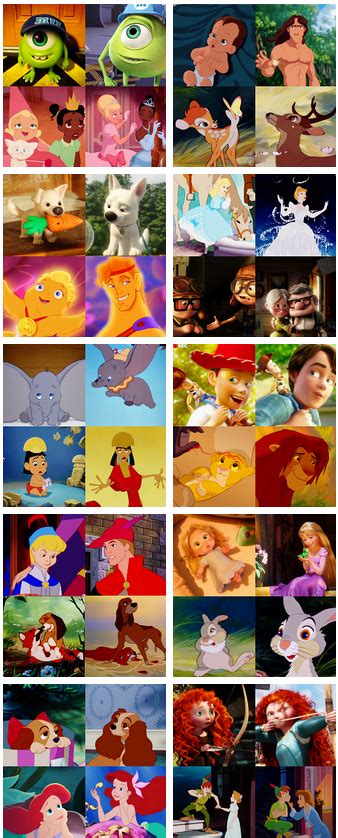The concept of character growth is a fundamental aspect of storytelling, allowing authors to craft compelling narratives that explore the complexities of human nature. Through their experiences, characters can undergo significant transformations, evolving from one state to another in a process that is both captivating and relatable. Character growth can manifest in various ways, depending on the context of the story and the author's intentions. In this article, we will delve into five ways characters can grow, examining the underlying mechanisms that drive these changes and the impact they have on the narrative.
Key Points
- Characters can grow through their experiences, leading to changes in their perspective, behavior, or understanding of the world.
- Internal conflicts and personal struggles can prompt characters to re-evaluate their beliefs and values, leading to growth.
- Interpersonal relationships can play a significant role in character growth, as characters learn from and influence one another.
- Characters can grow by overcoming challenges and obstacles, developing resilience and newfound strengths in the process.
- Self-reflection and introspection can facilitate character growth, enabling characters to develop a deeper understanding of themselves and their place in the world.
1. Overcoming Internal Conflicts

Internal conflicts are a powerful catalyst for character growth, as they force characters to confront their own flaws, fears, and weaknesses. Through their struggles, characters can develop a greater understanding of themselves, leading to changes in their perspective, behavior, or values. For instance, a character who has been struggling with self-doubt may learn to overcome their fears and develop a more confident outlook on life. This growth can be facilitated by the character’s experiences, relationships, and self-reflection, ultimately leading to a more nuanced and realistic portrayal of human nature.
The Role of Self-Awareness
| Character Growth Mechanisms | Examples |
|---|---|
| Internal conflicts | Overcoming self-doubt, confronting fears, resolving moral dilemmas |
| Interpersonal relationships | Forming close bonds, resolving conflicts, learning from others |
| Experiential learning | Overcoming challenges, developing new skills, gaining insight from experiences |

2. Developing Through Interpersonal Relationships

Interpersonal relationships can have a profound impact on character growth, as characters learn from, influence, and are influenced by others. Through their interactions, characters can develop new skills, gain insight into their own strengths and weaknesses, and form meaningful connections with others. For example, a character who has been struggling to form close relationships may learn to open up and trust others through their interactions with a supportive friend or mentor. This growth can be facilitated by the character’s experiences, self-reflection, and the feedback they receive from others, ultimately leading to a more nuanced and realistic portrayal of human relationships.
The Impact of Social Learning
Social learning is a critical component of character growth, as characters learn from observing, imitating, and interacting with others. By observing the behaviors, attitudes, and values of those around them, characters can develop new insights, skills, and perspectives, ultimately leading to changes in their behavior, values, or understanding of the world. Social learning can be facilitated by the character’s relationships, experiences, and self-reflection, allowing them to develop a more nuanced and realistic understanding of human nature.
3. Growing Through Experiential Learning
Experiential learning is a powerful mechanism for character growth, as characters can develop new skills, gain insight, and form meaningful connections with others through their experiences. By navigating complex situations, overcoming challenges, and learning from their mistakes, characters can develop a greater understanding of themselves and the world around them. For instance, a character who has been struggling to develop resilience may learn to cope with adversity through their experiences, ultimately leading to a more nuanced and realistic portrayal of human nature.
The Role of Feedback and Reflection
Feedback and reflection are critical components of experiential learning, as they enable characters to evaluate their experiences, identify areas for growth, and develop new insights and perspectives. By reflecting on their experiences, characters can develop a greater understanding of themselves, their strengths and weaknesses, and the world around them, ultimately leading to changes in their behavior, values, or understanding of the world.
4. Overcoming Challenges and Obstacles
Overcoming challenges and obstacles is a key aspect of character growth, as characters can develop new strengths, skills, and perspectives through their experiences. By navigating complex situations, characters can develop resilience, learn to adapt to changing circumstances, and form meaningful connections with others. For example, a character who has been struggling to overcome a personal obstacle may learn to develop a growth mindset, ultimately leading to a more nuanced and realistic portrayal of human nature.
The Impact of Adversity
Adversity can have a profound impact on character growth, as characters are forced to confront their weaknesses, fears, and limitations. By overcoming adversity, characters can develop a greater understanding of themselves, their strengths and weaknesses, and the world around them, ultimately leading to changes in their behavior, values, or understanding of the world.
5. Developing Through Self-Reflection and Introspection

Self-reflection and introspection are critical components of character growth, as characters can develop a deeper understanding of themselves, their strengths and weaknesses, and the world around them through their reflective processes. By examining their thoughts, feelings, and experiences, characters can identify areas for growth, develop new insights and perspectives, and form meaningful connections with others. For instance, a character who has been struggling to develop self-awareness may learn to reflect on their experiences, ultimately leading to a more nuanced and realistic portrayal of human nature.
What is character growth, and why is it important in storytelling?
+Character growth refers to the process by which characters change, develop, and evolve over the course of a story. It is essential in storytelling, as it allows authors to craft compelling narratives that explore the complexities of human nature and create relatable, believable characters.
How do internal conflicts contribute to character growth?
+Internal conflicts are a powerful catalyst for character growth, as they force characters to confront their own flaws, fears, and weaknesses. Through their struggles, characters can develop a greater understanding of themselves, leading to changes in their perspective, behavior, or values.
What role do interpersonal relationships play in character growth?
+Interpersonal relationships can have a profound impact on character growth, as characters learn from, influence, and are influenced by others. Through their interactions, characters can develop new skills, gain insight into their own strengths and weaknesses, and form meaningful connections with others.
Meta description suggestion: “Explore the complexities of character growth and development in storytelling, and discover how authors can craft compelling narratives that captivate and inspire readers.” (149 characters)

